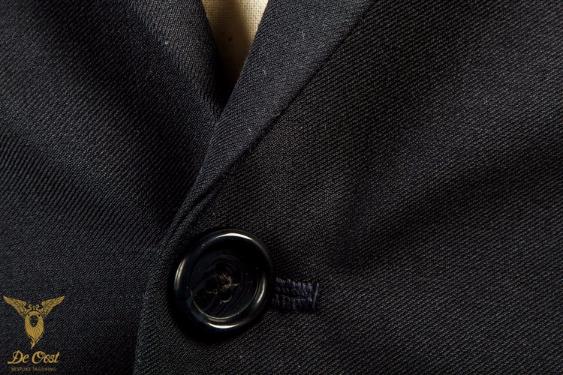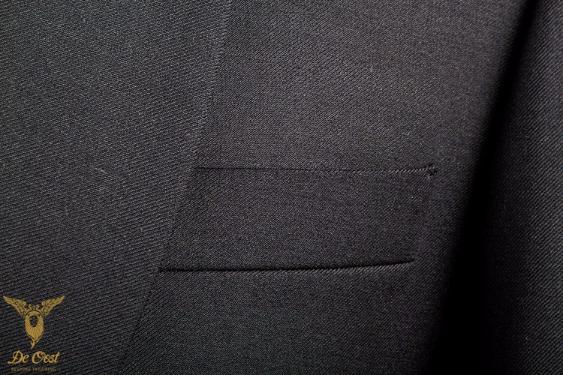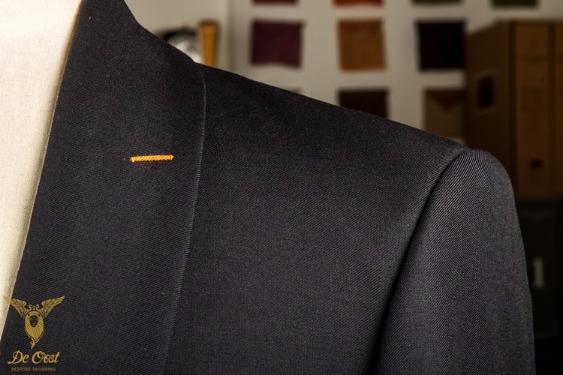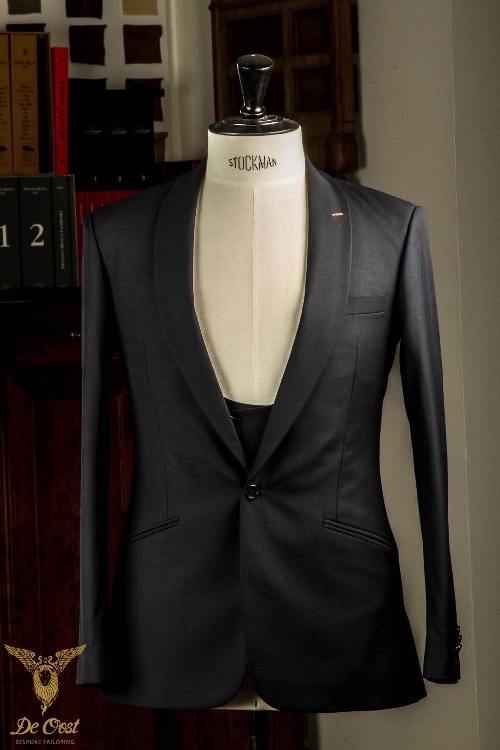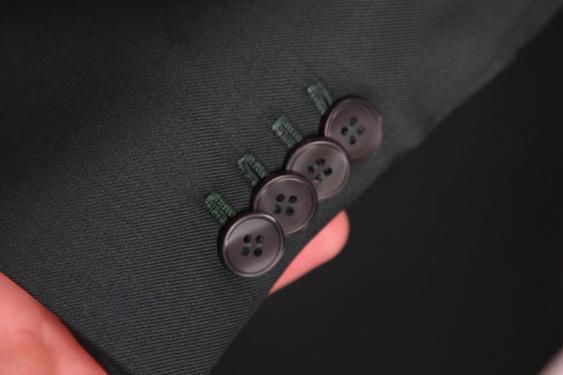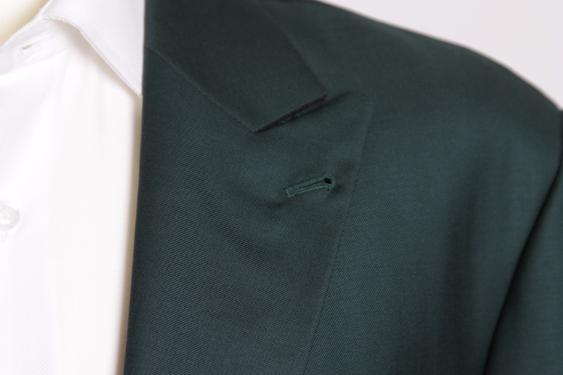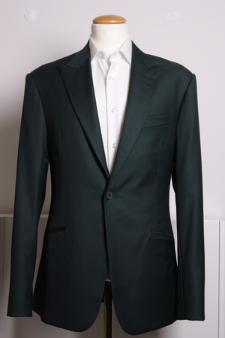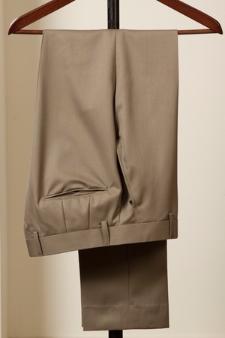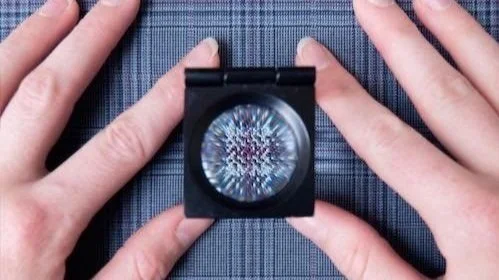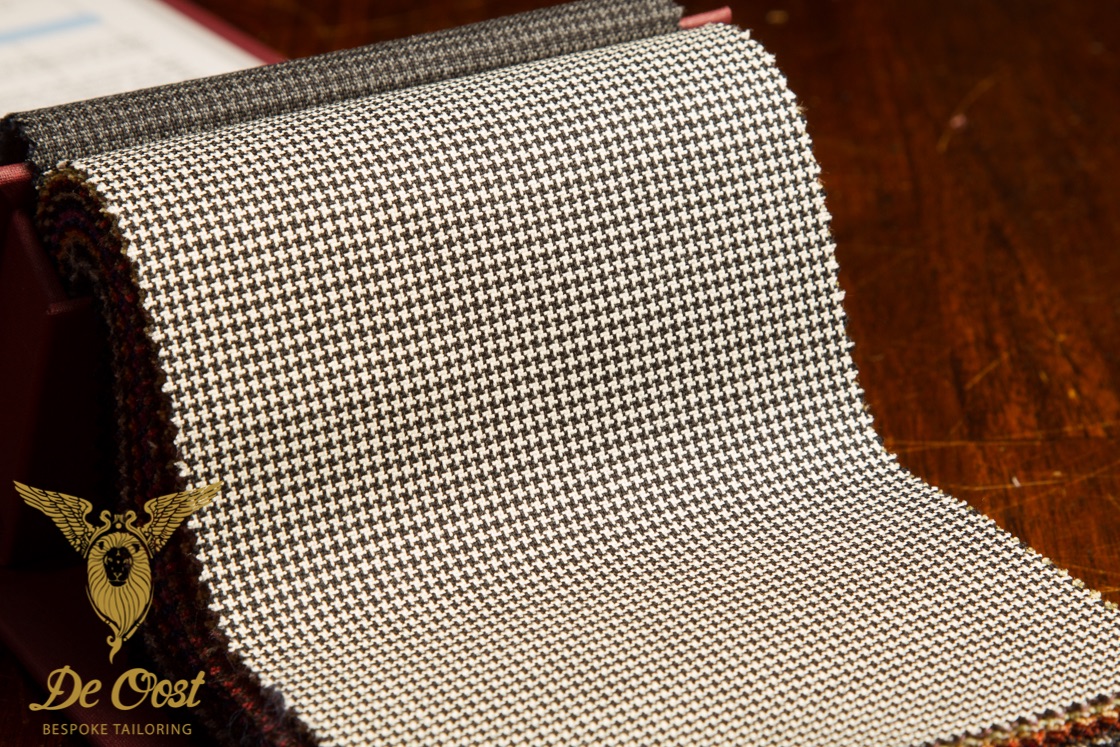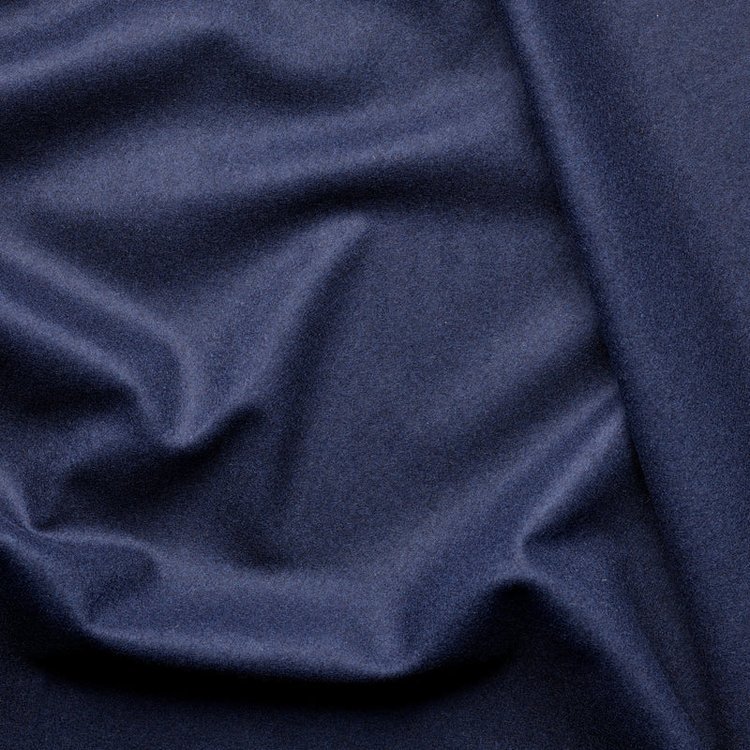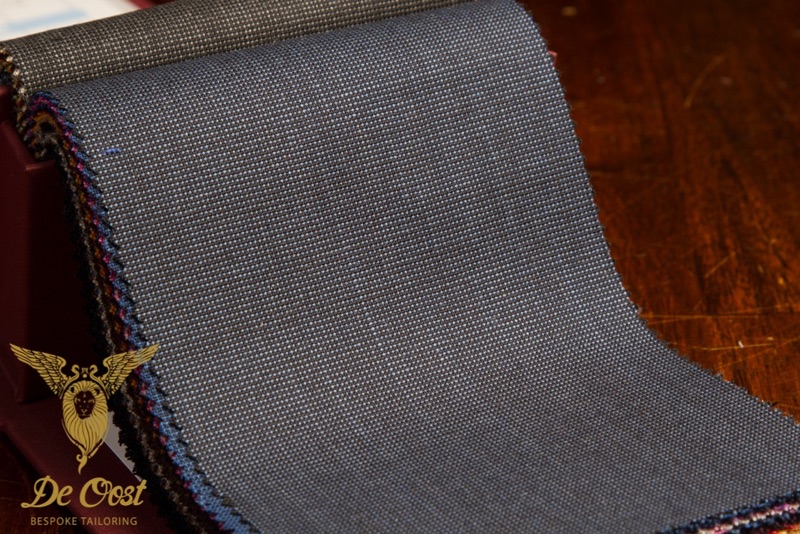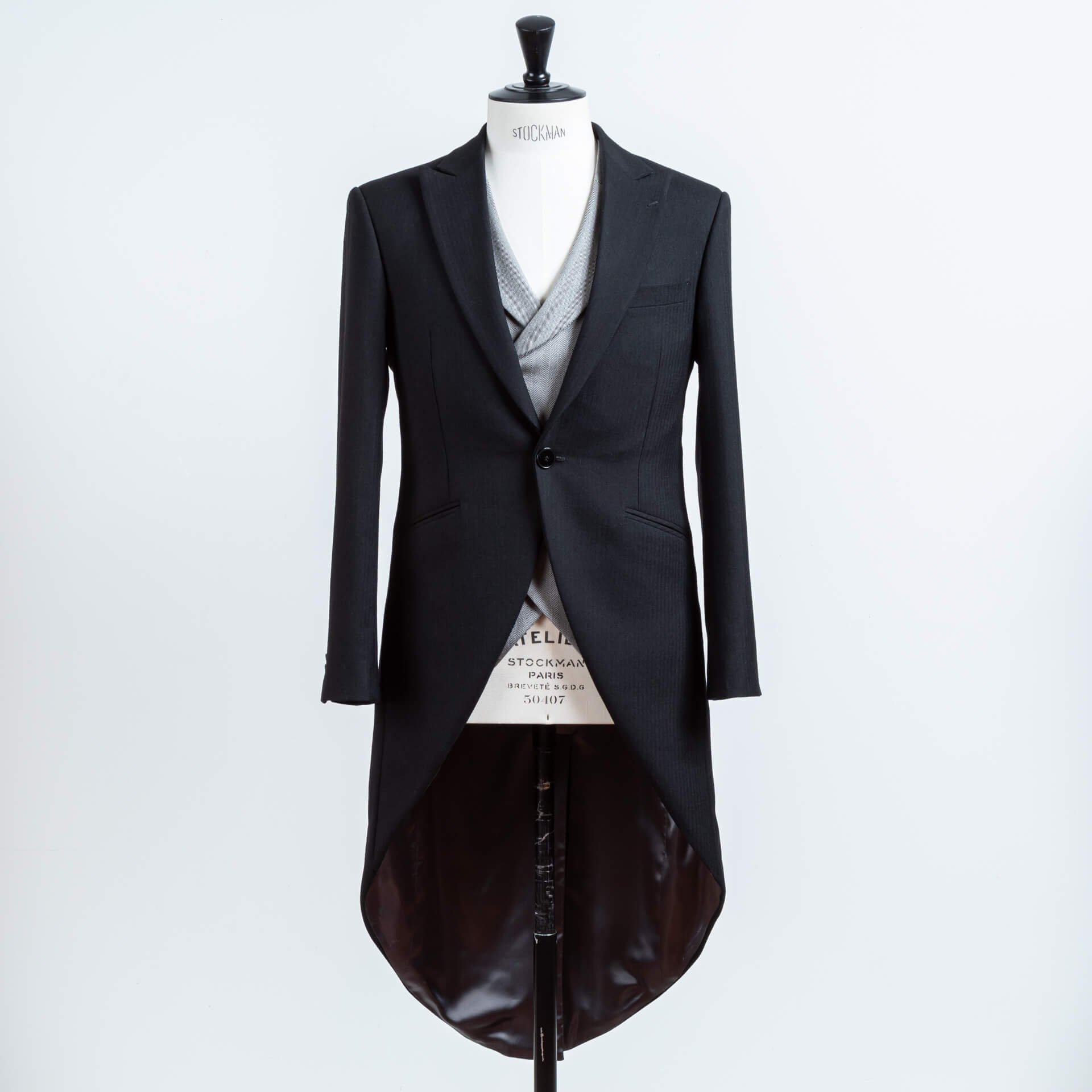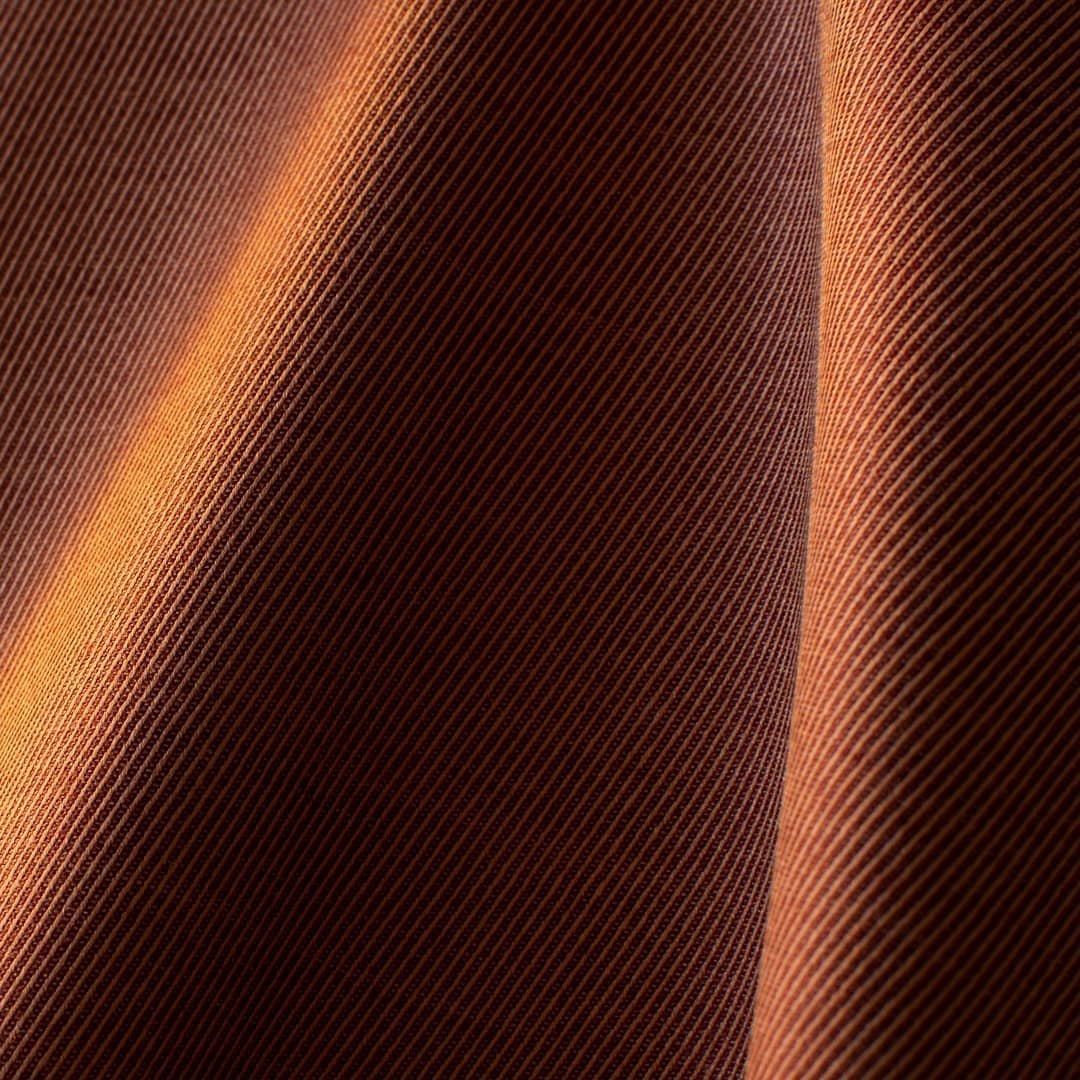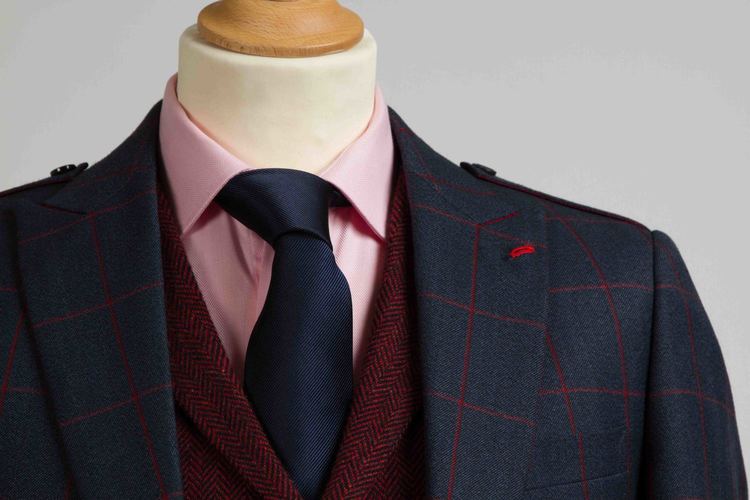Since its introduction in the thirties, the classic gab has consistently ranked right up there on the list of idealized dress suits. Costly to weave, expensive to tailor, sometimes problematic to press. The top-quality gabardine is delicate, luxurious and has limited wearability.
Not a colonial coloured Gabardine, but a very modern shawl collar navy blue Gabardine suit.
While not as sumptuous as its wool confrere, the cotton gabardine two-piece offers a soothing alternative to the typically dine suit will wrinkle, but its satiny freshness and cool suppleness offer the humidified epidermis a princely measure of comfort.
1-button contemporary navy blue suit jacket with shawl collar slanted pockets jetted & double breasted waistcoat
What is Gabardine?
Gabardine (or Gaberdine) is a smooth cloth in fine to medium worsted yarns that is so tightly woven it is soil-resistant and almost water-resistant. The twill rib is pronounced due to a weave with more warp threads than weft. It is usually in solid colours. This cloth is a popular suiting for all uses, including formal dress. Gabardine is also used for tailoring coats, raincoats, uniforms and men's shirts.
Racing green Gabardine suit with peak lapels and slanted pockets.
When it comes to worsted wool gabardine, the advantages are that it wears very well. It feels comfortable and it holds shape well. Wrinkles will go away when you hang it. The disadvantages however are that it is a 'dry clean only' suiting. It shows press marks very easy. Cleaners can over press too. You should request careful pressing.
History of Gabardine
The word Gabardine or Gaberdine has been used to refer to a "dress, covering" since the 1590s. It was originally a long, loose cloak or gown worn in the Middle Ages, but later it would signify a rain cloak or protective smock-frock. It has been used to mean "closely woven cloth" since 1904.
Gabardine was invented in 1879 by Thomas Burberry, founder of the Burberry fashion house in Basingstoke, and patented in 1888. The original fabric was waterproofed, before weaving and was worsted wool or worsted wool and cotton, tightly woven and water-repellant but more comfortable than rubberized fabrics.
Burberry clothing of gabardine was worn by polar explorers, including Roald Amundsen, the first man to reach the South Pole, in 1911, and Ernest Shackleton, who led a 1914 expedition to cross Antarctica. A jacket made of this material was worn by George Mallory on his ill-fated attempt on Mount Everest in 1924.
GABARDINE: A GREAT SUITING FABRIC FOR TROUSERS
At De Oost we have tailored several suits with Gabardine suiting fabric. Gabardine is also popular for making a separate pair of trousers. Because the fabric is tightly woven, it is firm, durable and rather lustrous, which makes it a good tough fabric for a sturdy pair of trousers.
Taupe solid Gabardine trousers.
The Effect of a Gabardine Suit
Roger Moore as James Bond in Octopussy (1983).
The website www.thesuitsofjamesbond.com discusses several suits worn in the different James Bond movies. It is notable that light brown Gabardine suits were worn in two James Bond movies. On the picture on the left we see Roger Moore as James Bond visiting India in Octopussy in a tan wool Gabardine suit. On the picture underneath we see him wear a light brown Gabardine Suit in For Your Eyes Only. A light-weight gabardine wool suit in light brown is a great suit for spring when it’s fairly warm but too early to take out the summer suits. In For Your Eyes Only, James Bond wears the light brown suit in Corfu to church for his confession to Q.
Roger Moore as James Bond in For Your Eyes Only (1981).


